Detail Guide On CCTV Monitoring Cameras
- 1 Benefits of CCTV Monitoring Cameras
- 1.1 1. Enhanced Security and Crime Prevention:
- 1.2 2. 24/7 Surveillance and Monitoring:
- 1.3 3. Workplace Productivity and Employee Safety:
- 1.4 4. Public Safety and Crowd Management:
- 1.5 5. Accident Investigation and Liability Protection:
- 1.6 6. Remote Monitoring and Accessibility:
- 1.7 7. Operational Efficiency and Loss Prevention:
- 1.8 8. Incident Documentation and Legal Compliance:
- 1.9 9. Emergency Response Coordination:
- 1.10 10. Cost-Effective Security Solution:
- 2 Types of CCTV Camera Systems
- 2.1 1. Analog CCTV Cameras:
- 2.2 2. IP (Internet Protocol) Cameras:
- 2.3 3. Dome Cameras:
- 2.4 4. Bullet Cameras:
- 2.5 5. PTZ (Pan-Tilt-Zoom) Cameras:
- 2.6 6. Thermal Cameras:
- 2.7 7. Wireless Cameras:
- 2.8 8. 360-Degree Cameras:
- 3 Features of CCTV Camera Systems
- 3.1 1. High-Resolution Imaging:
- 3.2 2. Night Vision Capabilities:
- 3.3 3. Wide Dynamic Range (WDR):
- 3.4 4. Motion Detection and Alerts:
- 3.5 5. Remote Access and Monitoring:
- 3.6 6. PTZ (Pan-Tilt-Zoom) Functionality:
- 3.7 7. Video Analytics and Intelligent Features:
- 3.8 8. Storage and Backup Options:
- 3.9 9. Tamper Detection and Vandal Resistance:
- 3.10 10. Integration with Security Systems:
- 4 How Remote CCTV Monitoring Works
- 4.1 1. Network Connectivity:
- 4.2 2. IP Cameras or Networked DVR/NVR:
- 4.3 3. Remote Access Software or Apps:
- 4.4 4. Secure Authentication and Encryption:
- 4.5 5. Remote Viewing and Control:
- 4.6 6. Event Notifications and Alerts:
- 4.7 7. Cloud-Based Remote Monitoring:
- 4.8 8. Remote Maintenance and Troubleshooting:
- 4.9 9. Integration with Security Systems:
- 4.10 10. Compliance with Privacy Regulations:
- 5 Top 5 CCTV Cameras for Monitoring
- 5.1 1. Hikvision DS-2CD2385G1-I 8MP Dome Camera:
- 5.2 2. Dahua IPC-HDW5442TM-AS-LED 4MP Turret Camera:
- 5.3 3. Axis Communications P3228-LVE 4K Bullet Camera:
- 5.4 4. Bosch NBE-6502-AL 1080p PTZ Camera:
- 5.5 5. Uniview IPC3238SR3-DVZ28 8MP Varifocal Dome Camera:
- 6 Future Trends in CCTV Monitoring
- 6.1 1. Artificial Intelligence and Video Analytics:
- 6.2 2. Integration with IoT Devices:
- 6.3 3. Cloud-Based Surveillance Solutions:
- 6.4 4. 5G Connectivity and Edge Computing:
- 6.5 5. Privacy and Data Protection Measures:
- 6.6 6. Hybrid Analog-Digital Solutions:
- 6.7 7. Enhanced Cybersecurity Measures:
- 7 Conclusion
- 7.1 Frequently Asked Questions
- 7.1.1 Q: Can I install CCTV cameras myself, or should I opt for professional installation?
- 7.1.2 Q: What are the ongoing costs associated with CCTV monitoring services?
- 7.1.3 Q: How does remote CCTV monitoring improve security for businesses?
- 7.1.4 Q: Are wireless CCTV cameras as effective as wired ones?
- 7.2 Q: What advancements can we expect in CCTV monitoring technology in the coming years?
CCTV camera monitoring has become an integral part of modern security systems, providing individuals and businesses with enhanced safety and surveillance. In this blog, we will explore the world of CCTV camera monitoring, specifically focusing on both CCTV and remote CCTV monitoring services.
In an era where security is paramount, CCTV camera monitoring has emerged as a crucial tool for safeguarding homes and businesses. The ability to monitor activities in real-time and the deterrent effect it has on potential criminals make CCTV systems an invaluable asset.
Benefits of CCTV Monitoring Cameras
The primary advantage of CCTV monitoring is the heightened level of security it offers. The mere presence of cameras acts as a deterrent, reducing the likelihood of criminal activities. Homeowners and businesses can enjoy peace of mind, knowing that their properties are under constant surveillance.
1. Enhanced Security and Crime Prevention:
CCTV monitoring serves as a powerful deterrent to criminal activities. The mere presence of cameras can discourage potential criminals from engaging in unlawful behaviour, as they are aware that their actions are being recorded. In cases where crimes do occur, CCTV footage becomes invaluable evidence for law enforcement, aiding in investigations and leading to more successful prosecutions.
2. 24/7 Surveillance and Monitoring:
One of the primary advantages of CCTV monitoring is its continuous operation, providing round-the-clock surveillance. This ensures that any suspicious activity or security breaches can be promptly detected and addressed. Real-time monitoring allows for immediate response to unfolding situations, reducing the likelihood of serious incidents.
3. Workplace Productivity and Employee Safety:
CCTV cameras in workplaces contribute to increased employee safety and well-being. They deter internal theft, harassment, and other inappropriate behaviours. Moreover, surveillance systems can be used to monitor and enhance productivity, providing employers with insights into workflow processes and identifying areas for improvement.
4. Public Safety and Crowd Management:
In public spaces, CCTV monitoring is crucial for ensuring the safety of citizens. It aids in the prevention of crime and terrorism, as well as managing large crowds during events, gatherings, or in busy urban areas. The ability to quickly identify and respond to potential threats enhances overall public safety.
5. Accident Investigation and Liability Protection:
CCTV footage is invaluable for investigating accidents, whether they occur on the road, in public spaces, or within private properties. This can be particularly beneficial for insurance claims, legal proceedings, and determining liability. The visual evidence captured by cameras provides an objective record of events.
6. Remote Monitoring and Accessibility:
Modern CCTV systems often allow for remote monitoring through internet-connected devices. This enables users to view live footage and access recorded videos from anywhere with an internet connection. Remote monitoring is especially beneficial for businesses with multiple locations, allowing for centralized surveillance and management.
7. Operational Efficiency and Loss Prevention:
CCTV monitoring contributes to operational efficiency by minimizing losses due to theft, vandalism, or unauthorized access. Businesses can use surveillance systems to identify vulnerabilities in their security protocols and take proactive measures to address them. This, in turn, helps in preventing financial losses and maintaining a secure environment.
8. Incident Documentation and Legal Compliance:
CCTV footage serves as a reliable documentation tool for incidents within and around monitored premises. This documentation can be crucial for legal purposes, compliance with regulations, and resolving disputes. It provides an unbiased record of events, helping businesses and authorities make informed decisions.
9. Emergency Response Coordination:
In emergencies, such as fires, natural disasters, or security threats, CCTV monitoring aids in coordinating an effective response. Emergency services can utilize live feeds to assess the situation and deploy resources strategically. This enhances overall emergency preparedness and response capabilities.
10. Cost-Effective Security Solution:
While the initial setup costs of CCTV systems can be significant, they often prove to be a cost-effective long-term security solution. The benefits in terms of crime prevention, incident resolution, and overall safety outweigh the initial investment, making CCTV monitoring a wise choice for businesses and public spaces alike.
Types of CCTV Camera Systems
CCTV camera systems come in various types, including analogue, IP, and wireless. Each type has its unique features, catering to different needs and preferences. Analogue cameras are traditional and cost-effective, while IP cameras offer advanced functionalities and wireless options that provide flexibility in installation.
1. Analog CCTV Cameras:
Analog CCTV cameras are the traditional type of surveillance cameras that transmit video signals via analogue cables to a recording device, such as a DVR (Digital Video Recorder). These cameras are known for their reliability and affordability. However, they offer lower resolution compared to digital alternatives and are gradually being replaced by more advanced systems.
2. IP (Internet Protocol) Cameras:
IP cameras, also known as network cameras, use digital technology to transmit video data over an IP network, such as the Internet or a local area network (LAN). These cameras offer higher resolution, better image quality, and advanced features like remote access and analytics. They are commonly used in modern CCTV systems for their versatility and scalability.
3. Dome Cameras:
Dome cameras are named for their dome-shaped housing, which makes them discreet and less obtrusive compared to other camera types. They are often used for indoor surveillance in retail stores, offices, and other commercial settings. Dome cameras come in various designs, including vandal-resistant models for outdoor use.
4. Bullet Cameras:
Bullet cameras are named for their sleek, cylindrical shape resembling a bullet casing. They are commonly used for outdoor surveillance due to their weatherproof design and long-range capabilities. Bullet cameras are ideal for monitoring large areas like parking lots, building perimeters, and highways. They often come with infrared (IR) capabilities for night vision.
5. PTZ (Pan-Tilt-Zoom) Cameras:
PTZ cameras offer remote-controlled pan, tilt, and zoom functionalities, allowing operators to adjust the camera’s direction and focus. These cameras are highly versatile and can cover large areas with a single unit. PTZ cameras are commonly used in applications requiring active monitoring, such as public spaces, stadiums, and industrial sites.
6. Thermal Cameras:
Thermal cameras, also known as infrared cameras, detect heat signatures rather than visible light, making them ideal for low-light or no-light environments. These cameras are used for perimeter security, outdoor surveillance, and applications where detecting heat anomalies is critical, such as fire detection and search and rescue operations.
7. Wireless Cameras:
Wireless CCTV cameras eliminate the need for physical cables by transmitting video data wirelessly to a receiver or network. These cameras are easy to install and suitable for temporary surveillance or locations where running cables is impractical. Wireless cameras come in various types, including IP cameras and battery-powered models for outdoor use.
8. 360-Degree Cameras:
360-degree cameras, also known as panoramic or omnidirectional cameras, capture a full 360-degree field of view, providing comprehensive coverage without blind spots. These cameras are ideal for monitoring large areas or crowded spaces, such as airports, train stations, and city centres. They often utilize fisheye lenses or multiple sensors to achieve panoramic views.
Features of CCTV Camera Systems
Modern CCTV camera systems boast features such as high-resolution video, night vision capabilities, and motion detection technology. These features contribute to the effectiveness of surveillance, ensuring clear footage regardless of lighting conditions.
1. High-Resolution Imaging:
Modern CCTV camera systems are equipped with high-resolution sensors that capture detailed images and videos. High-resolution imaging ensures that the footage recorded by the cameras is clear and provides accurate identification of people, objects, and events. This feature is particularly crucial for applications requiring forensic analysis and evidence gathering.
2. Night Vision Capabilities:
Many CCTV camera systems are equipped with infrared (IR) or low-light imaging technology, enabling them to capture clear footage even in low-light or nighttime conditions. Night vision capabilities ensure continuous surveillance and monitoring around the clock, enhancing security in both indoor and outdoor environments.
3. Wide Dynamic Range (WDR):
Wide Dynamic Range (WDR) technology allows CCTV cameras to capture clear images in scenes with high-contrast lighting conditions, such as areas with both bright sunlight and deep shadows. WDR ensures that details in both bright and dark areas of the image are visible, providing accurate surveillance footage in challenging environments.
4. Motion Detection and Alerts:
Many modern CCTV camera systems feature motion detection capabilities, which enable the cameras to detect movement within their field of view. When motion is detected, the cameras can trigger alerts or notifications, notifying security personnel or system operators of potential intrusions or suspicious activity in real time. Motion detection helps in proactive surveillance and response to security threats.
5. Remote Access and Monitoring:
Remote access and monitoring capabilities allow users to view live footage and access recorded video remotely via internet-connected devices, such as smartphones, tablets, or computers. This feature enables users to monitor their premises from anywhere at any time, enhancing situational awareness and enabling prompt response to security incidents or emergencies.
6. PTZ (Pan-Tilt-Zoom) Functionality:
CCTV camera systems equipped with PTZ (Pan-Tilt-Zoom) functionality allow users to remotely control the camera’s pan, tilt, and zoom functions. PTZ cameras can be adjusted to cover specific areas of interest, track moving objects, and zoom in for detailed inspection. PTZ functionality enhances flexibility and coverage in surveillance applications.
7. Video Analytics and Intelligent Features:
Some advanced CCTV camera systems incorporate video analytics and intelligent features, such as facial recognition, license plate recognition, object tracking, and behaviour analysis. Video analytics enable automated detection of specific events or patterns in the footage, improving efficiency in surveillance operations and enabling proactive security measures.
8. Storage and Backup Options:
CCTV camera systems offer various storage and backup options for recorded footage, including on-board storage, network-attached storage (NAS), cloud storage, and DVR/NVR (Digital Video Recorder/Network Video Recorder) systems. Adequate storage and backup options ensure that recorded footage is securely stored and easily accessible for review, analysis, and evidence purposes.
9. Tamper Detection and Vandal Resistance:
Many CCTV camera systems are designed with tamper detection features that trigger alerts or notifications in case of tampering or vandalism attempts. Additionally, cameras may feature vandal-resistant housings and rugged construction to withstand harsh environmental conditions and physical attacks, ensuring reliable operation and longevity in outdoor installations.
10. Integration with Security Systems:
Modern CCTV camera systems can be integrated with other security systems, such as access control systems, alarm systems, and video management platforms. Integration enables seamless coordination and communication between different security components, enhancing overall security effectiveness and enabling centralized management and control.
How Remote CCTV Monitoring Works
Remote monitoring relies on real-time video streaming and integration with mobile apps. Users can conveniently access their camera feeds through smartphones or other connected devices, ensuring constant vigilance even when physically distant.
1. Network Connectivity:
Remote CCTV monitoring relies on network connectivity to transmit video data from surveillance cameras to a remote location. This typically involves connecting CCTV cameras to a local network, such as a LAN (Local Area Network), or utilizing internet connectivity for remote access.
2. IP Cameras or Networked DVR/NVR:
Remote CCTV monitoring systems often use IP (Internet Protocol) cameras or networked DVR (Digital Video Recorder)/NVR (Network Video Recorder) systems. IP cameras directly connect to the network, allowing for remote access to live video feeds and recorded footage. Networked DVR/NVR systems receive video data from analogue cameras via encoders or connect directly to IP cameras over the network.
3. Remote Access Software or Apps:
Users can remotely access CCTV cameras using dedicated software applications or mobile apps installed on their computers, smartphones, or tablets. These software solutions provide a user-friendly interface for viewing live video feeds, accessing recorded footage, and managing camera settings remotely.
4. Secure Authentication and Encryption:
Remote CCTV monitoring systems employ secure authentication mechanisms, such as usernames and passwords, to ensure that only authorized users can access the surveillance cameras. Additionally, data encryption protocols, such as HTTPS (Hypertext Transfer Protocol Secure) or SSL/TLS (Secure Sockets Layer/Transport Layer Security), are utilized to protect video data transmitted over the network from interception or unauthorized access.
5. Remote Viewing and Control:
Once authenticated, users can remotely view live video feeds from CCTV cameras in real time. Remote viewing allows users to monitor their premises from anywhere with an internet connection, providing flexibility and convenience. In addition to live viewing, users can remotely control PTZ (Pan-Tilt-Zoom) cameras to adjust their orientation, zoom level, and focus remotely.
6. Event Notifications and Alerts:
Remote CCTV monitoring systems can be configured to send event notifications and alerts to users in response to specific events or triggers. These alerts can be triggered by motion detection, tampering, intrusion detection, or other predefined criteria. Users receive notifications via email, SMS (Short Message Service), or push notifications on their mobile devices, enabling them to respond promptly to security incidents.
7. Cloud-Based Remote Monitoring:
Some remote CCTV monitoring solutions utilize cloud-based platforms to store and manage video data remotely. Cloud-based remote monitoring offers scalability, flexibility, and accessibility, as users can access their surveillance footage from any internet-connected device without the need for on-premises hardware or infrastructure.
8. Remote Maintenance and Troubleshooting:
Remote CCTV monitoring systems enable remote maintenance and troubleshooting of surveillance cameras and recording devices. System administrators can remotely configure camera settings, update firmware, and diagnose issues without physically accessing the cameras or DVR/NVR systems, reducing downtime and minimizing disruptions to surveillance operations.
9. Integration with Security Systems:
Remote CCTV monitoring systems can be integrated with other security systems, such as alarm systems, access control systems, and video analytics platforms. Integration enables centralized management and control of multiple security components, streamlining security operations and enhancing overall situational awareness and response capabilities.
10. Compliance with Privacy Regulations:
Remote CCTV monitoring systems must comply with privacy regulations and data protection laws, particularly when monitoring public spaces or areas with privacy concerns. Adequate safeguards, such as data encryption, access controls, and anonymization techniques, are implemented to ensure compliance with applicable regulations and protect the privacy rights of individuals.
Top 5 CCTV Cameras for Monitoring
Selecting the right CCTV camera involves considering factors like resolution, coverage area, and compatibility with monitoring services. It’s essential to choose a system that aligns with specific security needs and integrates seamlessly with professional monitoring services.
1. Hikvision DS-2CD2385G1-I 8MP Dome Camera:
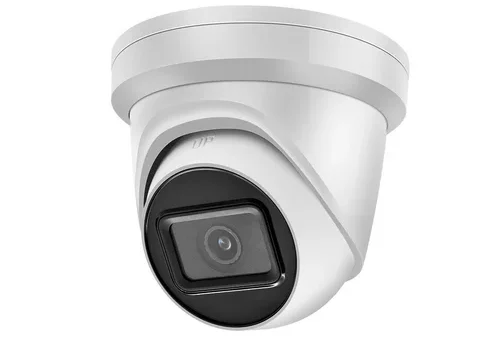
The Hikvision DS-2CD2385G1-I is a high-resolution dome camera known for its exceptional image quality and advanced features. With an 8-megapixel sensor, it captures detailed footage with crisp clarity, making it ideal for monitoring large areas or critical locations. This camera features infrared (IR) night vision, allowing for clear surveillance even in low-light conditions. Its IP67-rated weatherproof housing ensures durability and reliability in outdoor environments. Additionally, the camera supports advanced analytics such as motion detection and intrusion detection, enhancing security capabilities.
2. Dahua IPC-HDW5442TM-AS-LED 4MP Turret Camera:
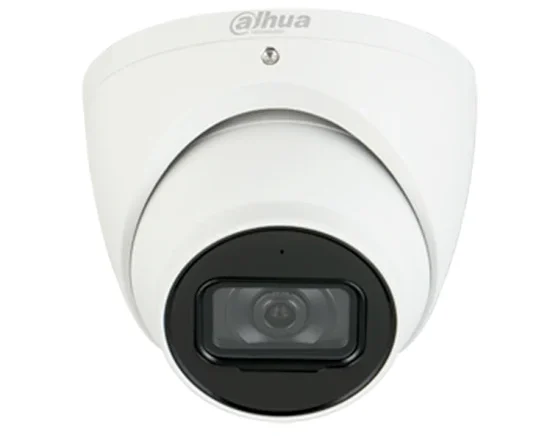
The Dahua IPC-HDW5442TM-AS-LED is a versatile turret camera known for its superior performance and innovative features. With a 4-megapixel sensor and built-in LED lights, it delivers clear and vivid images even in complete darkness, making it suitable for 24/7 surveillance. This camera features smart IR technology for optimized night vision and a vandal-resistant design for added durability. It supports intelligent analytics such as tripwire detection and intrusion detection, providing reliable security monitoring for various applications.
3. Axis Communications P3228-LVE 4K Bullet Camera:
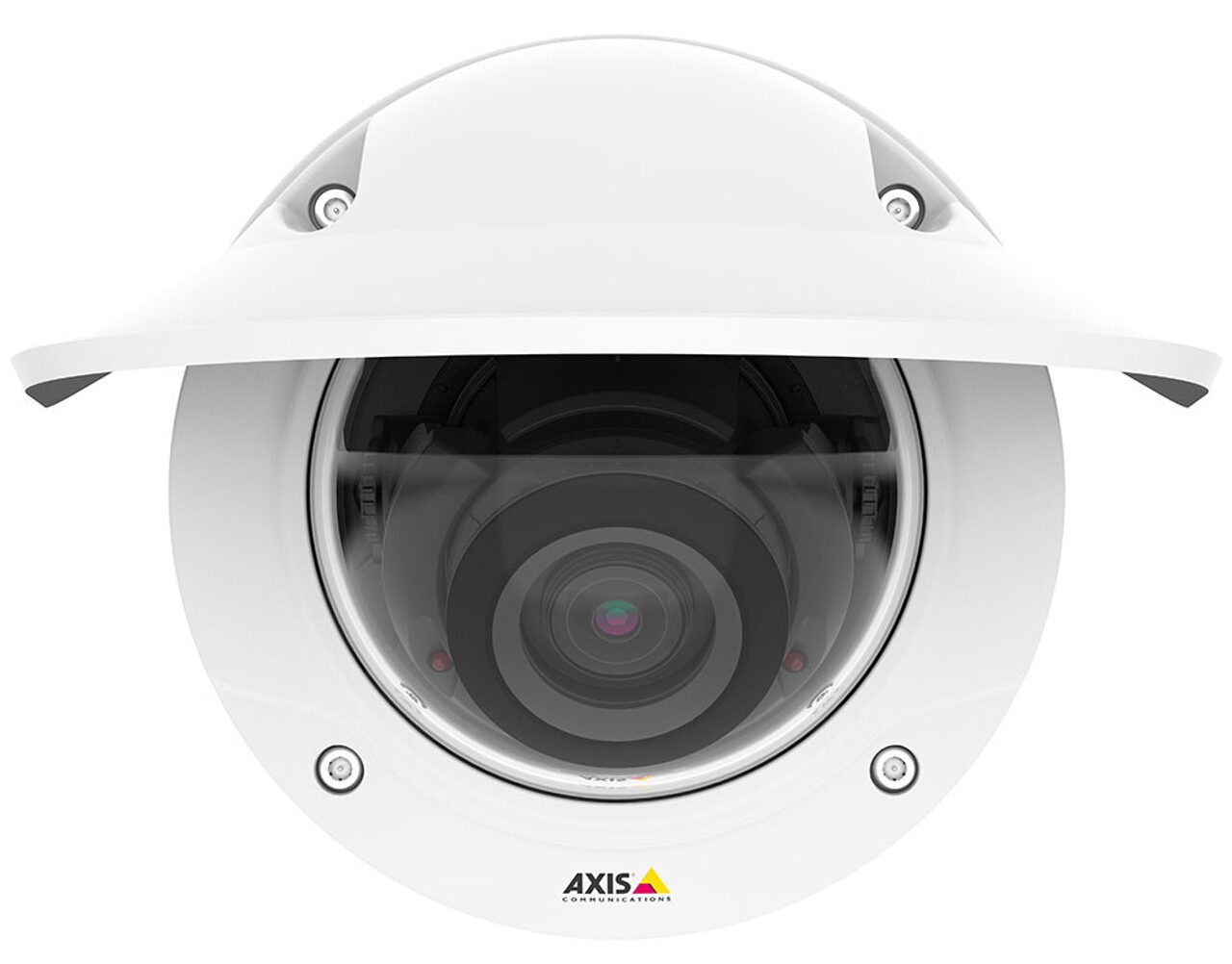
The Axis Communications P3228-LVE is a top-of-the-line bullet camera designed for professional surveillance applications. With its 4K resolution and advanced image processing capabilities, it delivers exceptional image quality and detail, ensuring reliable monitoring in demanding environments. This camera features built-in IR illumination for clear night vision and a rugged design with IP66 and IK10 ratings for outdoor use in harsh conditions. It supports advanced analytics such as object tracking and people counting, enhancing security and operational efficiency.
4. Bosch NBE-6502-AL 1080p PTZ Camera:
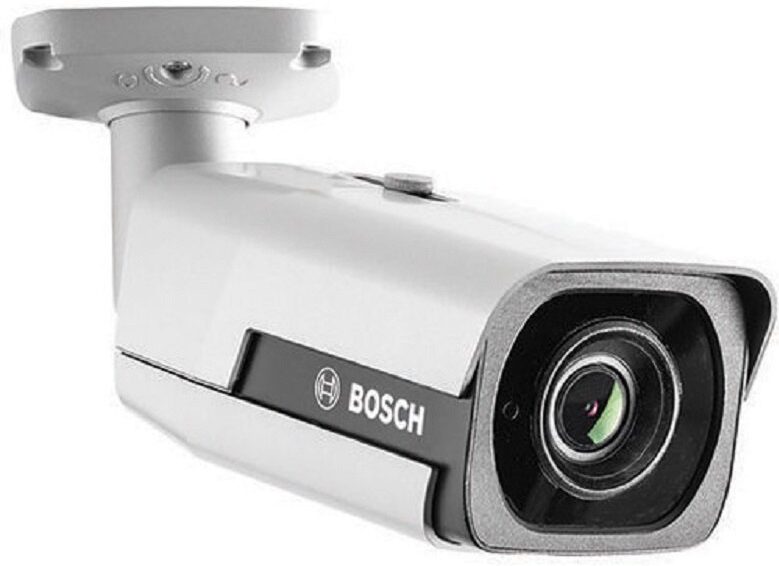
The Bosch NBE-6502-AL is a high-performance PTZ camera renowned for its reliability and versatility. With its 1080p resolution and powerful optical zoom capabilities, it provides detailed surveillance coverage over large areas with precision and clarity. This camera features advanced pan-tilt-zoom functionality for flexible monitoring and tracking of moving objects. It also offers intelligent video analytics such as loitering detection and object removal detection, enabling proactive security measures.
5. Uniview IPC3238SR3-DVZ28 8MP Varifocal Dome Camera:
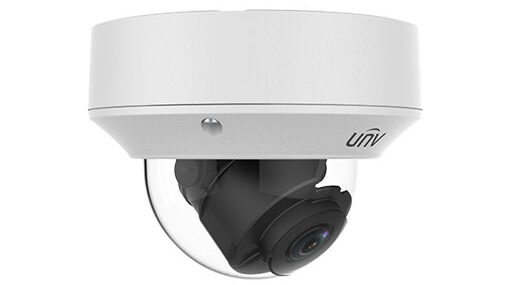
The Uniview IPC3238SR3-DVZ28 is a feature-rich varifocal dome camera known for its exceptional image quality and advanced functionality. With an 8-megapixel sensor and varifocal lens, it delivers clear and detailed footage over a wide range of viewing angles. This camera features motorized zoom and autofocus for easy installation and adjustment. It also supports intelligent analytics such as face detection and cross-line detection, enhancing security and operational efficiency in various surveillance applications.
Future Trends in CCTV Monitoring
The future of CCTV monitoring holds exciting possibilities with advancements in technology. Integration with smart home devices and improved artificial intelligence capabilities are expected to enhance the overall effectiveness of surveillance systems.
1. Artificial Intelligence and Video Analytics:
The future of CCTV monitoring is heavily influenced by artificial intelligence (AI) and advanced video analytics. AI-powered algorithms enable CCTV systems to analyze video footage in real time, detect anomalies, and identify potential security threats with greater accuracy. Video analytics capabilities are expected to evolve further, incorporating features such as facial recognition, object tracking, and behavioural analysis, enhancing the effectiveness of surveillance systems in detecting and responding to security incidents.
2. Integration with IoT Devices:
CCTV monitoring systems are increasingly integrating with Internet of Things (IoT) devices to create interconnected security ecosystems. Integration with IoT devices such as smart sensors, access control systems, and alarm systems enables seamless communication and coordination between different security components. This integration enhances situational awareness and enables more efficient responses to security incidents through automated actions and alerts.
3. Cloud-Based Surveillance Solutions:
Cloud-based surveillance solutions are gaining popularity as they offer scalability, flexibility, and accessibility. Cloud-based CCTV monitoring allows for centralized storage and management of video footage, eliminating the need for on-premises hardware and infrastructure. Moreover, cloud-based solutions enable remote access to live video feeds and recorded footage from any internet-connected device, providing greater convenience and flexibility for users.
4. 5G Connectivity and Edge Computing:
The advent of 5G connectivity is set to revolutionize CCTV monitoring by offering higher bandwidth, lower latency, and greater reliability. 5G connectivity enables faster transmission of high-definition video footage, facilitating real-time monitoring and response to security incidents. Additionally, edge computing capabilities empower CCTV systems to process video data locally, reducing dependence on centralized servers and enhancing responsiveness in critical situations.
5. Privacy and Data Protection Measures:
As concerns about privacy and data protection continue to grow, future trends in CCTV monitoring will focus on implementing robust privacy measures and ensuring compliance with regulations. Technologies such as anonymization, encryption, and access controls will be integrated into CCTV systems to safeguard the privacy rights of individuals and protect sensitive data. Furthermore, advancements in privacy-enhancing technologies will enable CCTV systems to balance security needs with privacy considerations effectively.
6. Hybrid Analog-Digital Solutions:
While digital IP-based CCTV systems are becoming increasingly prevalent, hybrid analogue-digital solutions are expected to remain relevant in the future. Hybrid solutions allow for the integration of existing analogue cameras with digital IP cameras and networked recording devices, preserving investments in legacy infrastructure while leveraging the benefits of digital technology. This flexibility enables gradual migration to digital surveillance solutions while accommodating budget constraints and operational requirements.
7. Enhanced Cybersecurity Measures:
With the growing connectivity of CCTV systems and the potential risks of cyber threats, future trends in CCTV monitoring will prioritize enhanced cybersecurity measures. CCTV manufacturers and service providers will focus on implementing robust cybersecurity protocols, such as secure authentication mechanisms, encryption standards, and regular software updates, to protect against unauthorized access, data breaches, and other cyber threats. Additionally, cybersecurity awareness and training will be emphasized to ensure that users understand and mitigate potential risks effectively.
Conclusion
In conclusion, the importance of CCTV camera monitoring cannot be overstated. The combination of CCTV monitoring and remote CCTV monitoring services provides a comprehensive solution for ensuring security and peace of mind. Investing in a reliable system tailored to specific needs is a proactive step towards safeguarding homes and businesses.
Frequently Asked Questions
Q: Can I install CCTV cameras myself, or should I opt for professional installation?
A: While DIY installation is possible, professional installation ensures optimal setup and integration with monitoring services.
Q: What are the ongoing costs associated with CCTV monitoring services?
A: Monthly monitoring fees cover the cost of professionals overseeing your security system, providing a rapid response to any incidents.
Q: How does remote CCTV monitoring improve security for businesses?
A: Remote monitoring allows business owners to access live video feeds from anywhere, ensuring constant surveillance and quick response to potential threats.
Q: Are wireless CCTV cameras as effective as wired ones?
A: Wireless CCTV cameras offer installation flexibility and are equally effective in providing high-quality surveillance footage.
Q: What advancements can we expect in CCTV monitoring technology in the coming years?
A: Future trends include integration with smart home devices and enhanced artificial intelligence capabilities for more efficient surveillance.

















